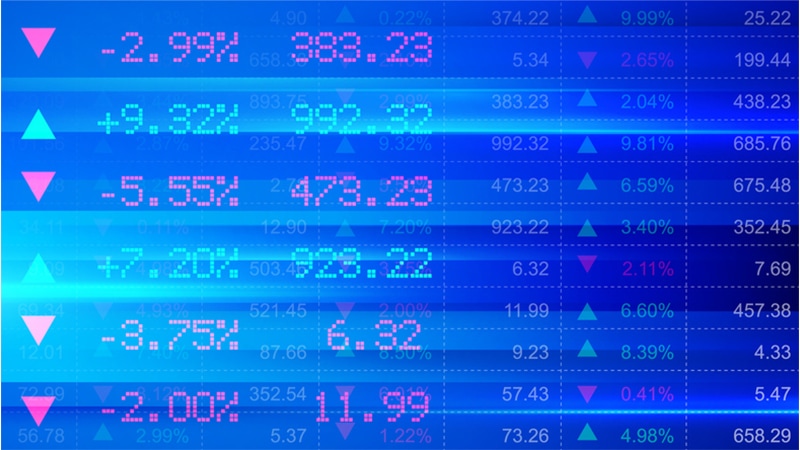June 28, 2024

Even as US stocks have set a series of record highs this year, investors may still benefit from sticking with riskier assets for the remainder of 2024, rather than parking their money in cash. But there’s likely to be some turbulence in the months ahead, according to Christian Mueller-Glissmann of Goldman Sachs Research and Alexandra Wilson-Elizondo of Goldman Sachs Asset & Wealth Management.
The expansion in US GDP, while slowing, is still firm. Unemployment rates are historically low, and corporate profit margins are high. Household and business finances are strong due to the deleveraging during the pandemic recovery, creating some cushion in case the slowdown accelerates, says Mueller-Glissmann, head of asset allocation research within portfolio strategy, in an episode of Goldman Sachs Exchanges.
“Growth is pretty solid,” Mueller-Glissmann says in the podcast with host Allison Nathan. “You have rate cuts on the horizon. I think that’s generally a backdrop where we want to be invested.”
As is common in the later stages of the economic cycle, stock valuations are elevated, and risk premiums — the investment returns that assets are expected to yield above their risk-free rate of return — are low. That’s balanced, to some extent, by the S&P 500’s return on equity, which is among the highest it’s been in more than a century. “From that perspective, the valuations are high, but we’re not really taking it as a reason to be extra bearish,” Mueller-Glissmann says.
In addition, a technology revolution is underway as investors look for opportunities created by generative artificial intelligence. That “structural” boost can help support a stock market rally late in the cycle, as earnings growth usually starts to fade, Mueller-Glissmann says.
The bond market, meanwhile, is providing a buffer for portfolios in case the economy loses too much momentum. As of June 17, 10-year US Treasuries yield 4.3%, and Goldman Sachs Research forecasts 10-year yields to stay above 4% next year.
Inflation is likely to cool further, says Wilson-Elizondo, co-chief investment officer of multi-asset solutions. While US unemployment is low, at around 4%, job openings have dropped significantly. That suggests inflation pressure from the labor market has dissipated. The Federal Reserve has adjusted expectations such that policymakers can make rate cuts even without a recession.
“We continue to be risk on,” Wilson-Elizondo adds. “And quite simplistically, it’s equities over bonds.” A pause in Fed policy tends to be better for stocks than fixed-income securities. While bonds will provide a buffer for riskier investments and “ballast” for portfolios, interest rates are likely to be volatile as monetary policymakers will scrutinize each economic data point that comes in, she says.
As market turbulence rises, hedging will be more important
Wilson-Elizondo says investors may need to prepare for more volatility in the months ahead. Currency markets around the world have gyrated amid a record number of elections this year, and voters in the world’s largest economy will go to the polls in November.
In the US, even though the Republican and Democratic candidates for president have been in office before, there’s scope for markets to be surprised, Wilson-Elizondo says. “We can’t expect the same policies as we have in the past from two people we’ve seen before, because we’re in a much different environment,” she notes.
Wilson-Elizondo says bonds can be a useful hedge, although additional government borrowing could put pressure on fixed-income. Private sector assets and active management from the likes of hedge funds may be an opportunity for hedging, as could a rotation across assets. That could mean switching some exposure from corporate debt (which offers little extra yield relative to government bonds) to Treasuries.
Hedging in the options markets is “pretty cheap,” Mueller-Glissmann says. Volatility is low for stocks as well as currencies, and he says there’s a lot of interest from clients in foreign-exchange hedges when elections are near.
How to structure a 60/40 portfolio for the next decade
While the traditional portfolio with a 60/40 split of stock and bonds had one of its largest losses on record in 2022, Mueller-Glissmann says there’s likely to be merit in being more balanced again. His team has found that much depends on the markets’ structural underpinnings, and his team outlines several major “regimes”:
- Goldilocks: low inflation, strong economic growth, some productivity growth
- Goldilocks + AI boost: low inflation, strong economic growth, high productivity growth
- Stagnation: low inflation, low economic growth
- Stagflation: high inflation, low economic growth
Mueller-Glissmann says “strategic tilting” based on the economic regime has, historically, resulted in materially better risk-adjusted returns compared with a static 60/40 portfolio.
“In a Goldilocks scenario, especially with high productivity growth, there is a strong case for higher equity allocations, while during stagnation episodes there is a strong case for higher bond allocations,” he writes in his team’s report. “For stagflation, there tends to be little reward for taking any risk, suggesting investors are better off in cash. Assets that diversify inflation risk or provide exposure to rising productivity growth can create a more diversified balanced portfolio and strategic tilting opportunities.”
He notes that real assets — such as real estate or commodities like oil and gold — can help diversify inflation risk in a balanced portfolio. Stocks that are expected to grow faster than the rest of the market can provide exposure to higher productivity growth, which could be relevant as companies look to use AI to become more efficient.
Mueller-Glissmann’s team’s research shows that the optimal portfolio now is likely to be one-third equity with a tilt towards growth stocks; one-third bonds; and one-third real assets. The latter may help address concerns about inflation, high inflation volatility, and stagflation.
But there’s an important nuance: A portion of those real assets (about 20%) could go into equities that offer the characteristics of real assets (for example commodity companies, infrastructure and real estate), and the rest of the real assets can go into bonds with inflation protection (TIPS).
“So, you’re back at 60/40, which we often end up at,” he says. “But you now have a 60/40 portfolio which is actually robust to a lot of the worries we hear from investors right now.”
How to diversify with non-US assets
Wilson-Elizondo says she’s “cautiously optimistic” on European assets, which have fluctuated following recent elections. But it’s important to assess them one by one, she says, suggesting active portfolio management, rather than investing in a broad index, could be wise.
Japan may offer a more clear-cut opportunity for investors. She says the Japanese government has a “very strong desire” to make sure inflation and economic growth become entrenched. Corporations are also undertaking reforms to boost return on equity and valuations. The county is, in addition, likely to benefit from AI innovation and semiconductor demand. “Over time, we do believe that this is still a nice valuation story and a way to get diversification into the portfolios,” she says.
This article is being provided for educational purposes only. The information contained in this article does not constitute a recommendation from any Goldman Sachs entity to the recipient, and Goldman Sachs is not providing any financial, economic, legal, investment, accounting, or tax advice through this article or to its recipient. Neither Goldman Sachs nor any of its affiliates makes any representation or warranty, express or implied, as to the accuracy or completeness of the statements or any information contained in this article and any liability therefore (including in respect of direct, indirect, or consequential loss or damage) is expressly disclaimed.
